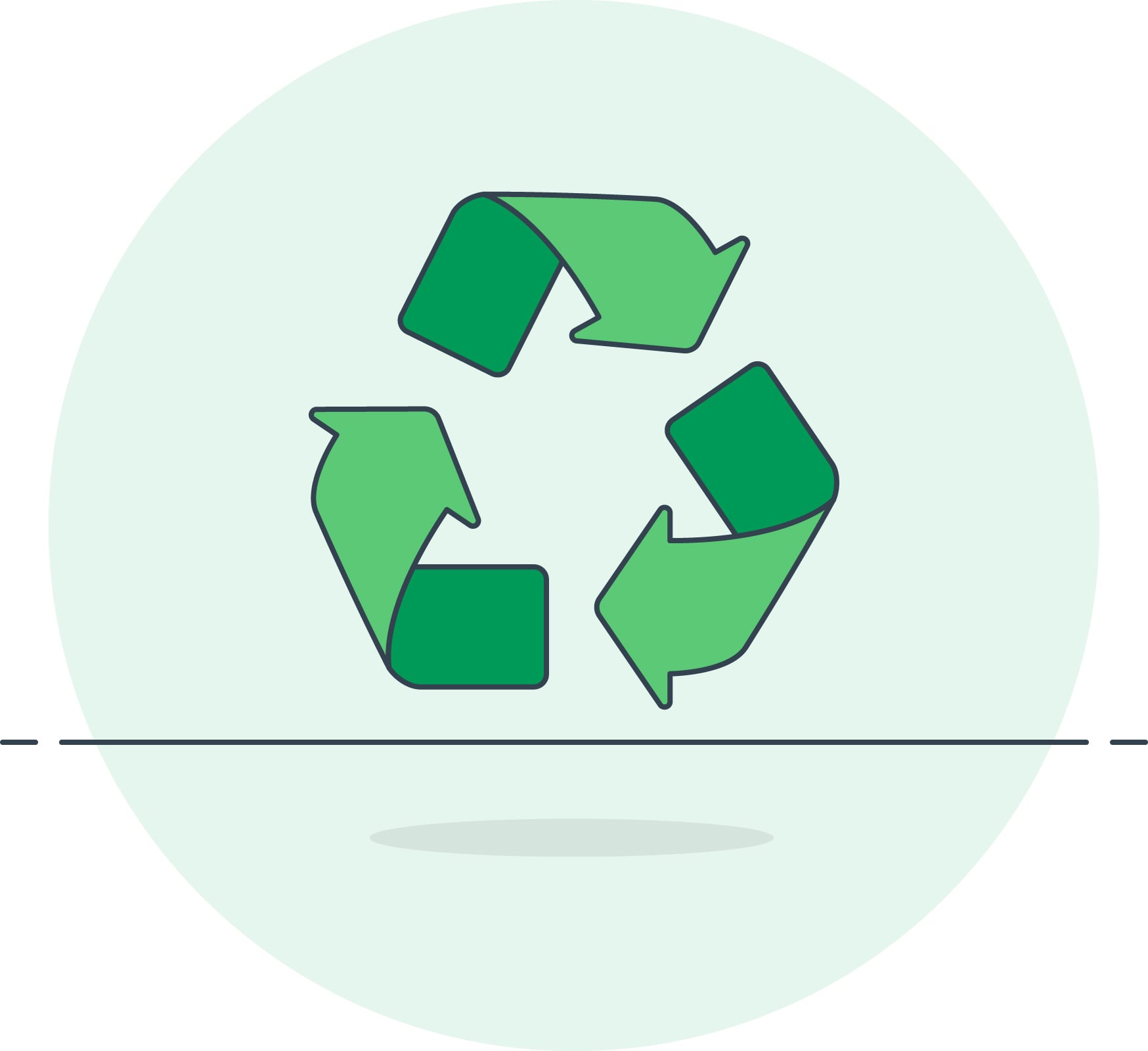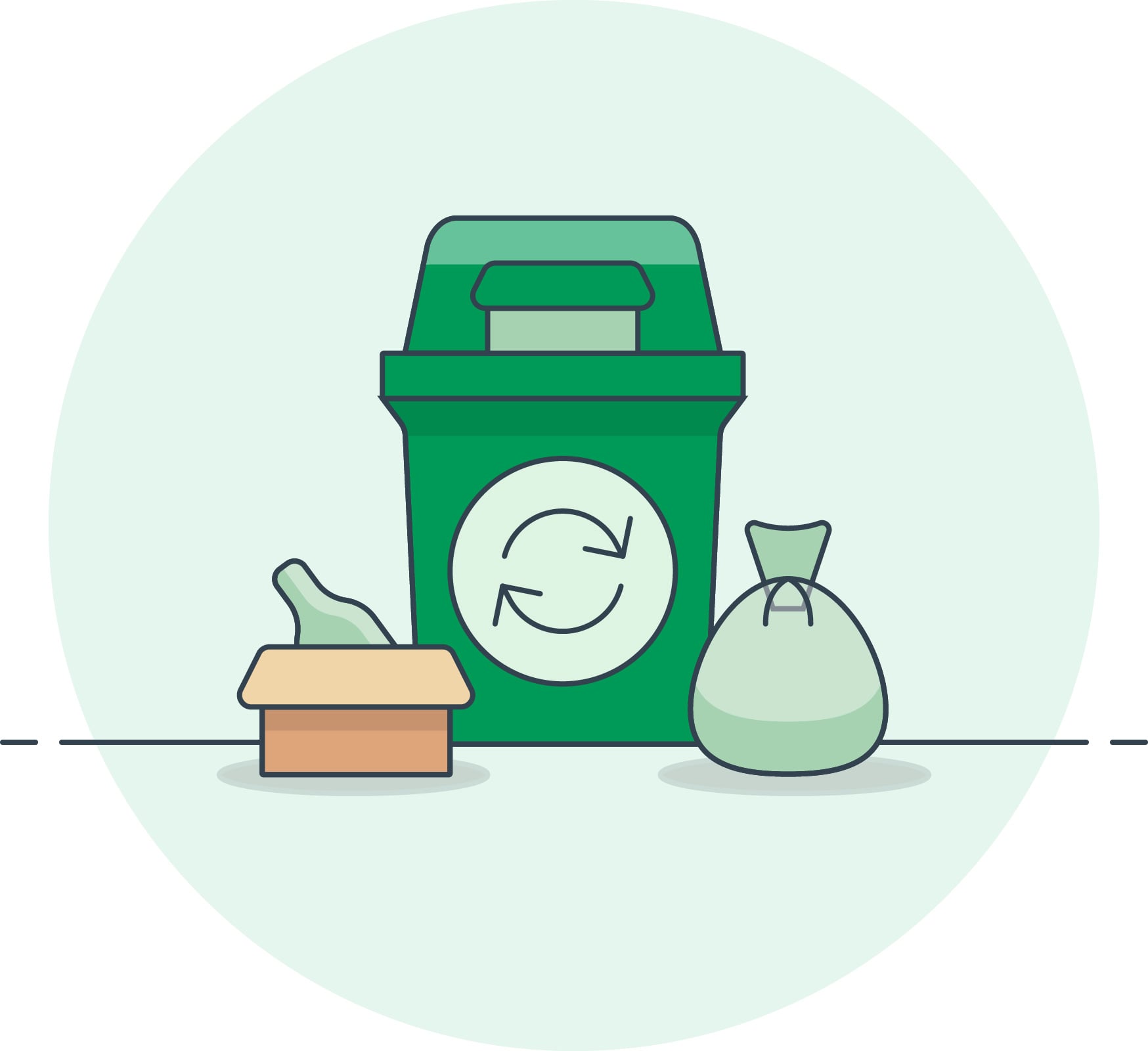Humans have a lot to be proud about—the invention of the wheel, the ability to create fire at will, cat videos, poutine. We’re full of ideas and a zest for life. We always want more.
But, our vigor for progress has also created a massive cloud of smoke in our wake. The largeness of our ambition came with a carbon footprint too enormous to ignore.
Our carbon footprint is an issue that we must take on as a collective and there are things that each of us can do to reduce our own footprint. We’ve got tips to get you on your way.
How to reduce your carbon footprint
First, you’ll want to calculate your own footprint via this handy calculator. Now that you’ve got your size, let’s see what we can do to get you into something smaller.
Fly less

Most people like getting whisked off in a massive metal tube vehicle into the skies and then deposited in some sunny locale. It’s fun. But, is it always necessary?
Flights pack a punch when it comes to carbon emissions. You are looking at more than 1 metric ton of CO2 emissions for a flight from NYC to LA.
The simple advice is to fly less. But we know that is easier said than done. So, when you have to, fly economy class (smaller plane footprint) and go nonstop. Takeoffs and landings account for a large part of fuel consumption.
Finally, if you are feeling a bit guilty about those trips, offset them! There are many services out there that sell carbon offsets for a variety of environmental projects.
Native Energy, COTAP, and Cool Effect are all US-based organizations where you can calculate your carbon footprint and purchase offsets. Their projects are all third-party certified and each has a documented track record of their impact.
Drive less

Along the same lines, but here on the ground, you can reduce your miles spent driving. A lot of this comes down to finding a good alternative for commuting to work.
Public transportation is a great option in many cities and can free you up to listen to the hottest new podcasts or read that book club pick (all the way through this time).
Or, you can bike, so you can confidently tell your doctor you’ve been regularly exercising. If you aren’t too far from where you’re headed, take to your feet and put those shoes to the test.
But, when you have to drive, there are ways you can make it more efficient.
- Find a more efficient vehicle. That ‘75 Chevy truck may drive like a dream, but it burns fuel like a nightmare. Newer cars are more efficient in general but hybrid and electric vehicles are the best bet.
- Check your tires and keep them pumped. Low tire pressure causes worse fuel efficiency, therefore more emissions.
- Get your car serviced when you are supposed to. See that ‘Check Engine’ light? Go get it checked.
- Cut it out with all the A/C. While a cool breeze is nice, you can chill out on blasting it so regularly. It takes fuel to cool.
- Stop pumping the pedals so much. Braking and gasing reduces the efficiency of your ride. No need to stop and start like you’re racing.
- Cruise control is your friend. Let the robot brain of your car take on the task of keeping you at just over the speed limit (we see you), and you’ll save gas on those longer trips.
- Carpool. If you can get three other people from solo driving to work (or wherever), than you’ve reduced emissions. Pat your back heartily.
Watch your wattage

Your home is where you spend a lot of time.
Your heating, air conditioning, lights, appliances, etc. all come together to form your energy use.
Here are some tips to reduce that wattage:
- When you aren’t using lights, turn them off.
- If you still have incandescent bulbs, replace them with LEDs for a longer, more efficient lifespan.
- Unplug appliances when not in use.
- Keep your heating in check during the winter and don’t go overboard with air conditioning in the summer.
- Replace your older appliances with Energy Star certified appliances, which are more efficient.
- Turn down your water heater.
There are lots of little things you may not be doing that are unnecessarily expending energy in your home.
Up your home efficiency

Old homes can be leaky homes. You want to find the spots where heat can escape and seal them.
That plus updating your exterior insulation can do a lot to hold in more of your heat and air conditioning.
Replace old doors and windows with modern energy efficient ones. A leaky window can mean lots of cold feet in the winter.
On top of that, you can install a roof that reflects light and heat away from your house.
Conserve water

While the planet seems positively covered in water, freshwater makes up less than 3% of all that. So, for our purposes, there isn’t much.
So, we need to conserve it. But, scarcity isn’t the only reason.
So, how does using water affect your carbon footprint? That water you use needs treatment and it needs to be pumped into your lovely home.
That requires energy, which often means carbon emissions.
In order to do your part you can buy low-flow showerheads. You’ll still get a good shower and you’ll use less. Also, if you aren’t using the water, turn it off. Simple as that.
Move to sustainable energy

Not everyone has the option of moving away from traditional carbon-emitting energy sources.
In an apartment building, you get what you get. But, if you own your house and have the ability to do so, you can upgrade your place to start using solar energy.
Slap those panels atop your abode and take in the purest form of energy around. Many municipalities have programs that can help you get started.
There are even home wind turbines that can help you along with some extra energy when you need it.
Eat locally and seasonally

What you eat matters not only to your body but to the environment around that body. By buying food that came from somewhere nearer to where you live, it was made to travel that much fewer miles.
These food-miles are important to reducing your carbon footprint, but contribute way more in the way of supporting your local economy.
As you’ll see in the next tip, the trip may pale in comparison to the production.
Reduce meat consumption

While it’s better to eat locally raised beef than it is to eat beef from across the country, the lion’s share of carbon emissions are coming from the production rather than the transportation.
Meat production, especially red meat, uses huge amounts of land, feed, and water. On top of that, cows emit a lot of methane (you know how), which is 84 times more potent than carbon dioxide.
Globally, livestock operations are responsible for 14.5% of anthropogenic greenhouse gas emissions. That’s significant.
Reducing consumption of meat, especially red meat, can have a profound impact on your carbon footprint.
So, go meatless once a week to start. Trade that ribeye for a plate of delicious eggplant parmesan. It won’t kill you. Actually, quite the opposite.
Use the food you buy

A certain amount of food waste is hard to avoid, but good planning can help a lot.
Here are a few great ways to stop wasting food:
- Plan your meals and purchase accordingly. Wandering the aisles and buying up whatever makes you excited is a recipe for wastage.
- Cook up just enough. While preparing a huge pot of minestrone is great for a group, if you are just one or two people, it might just end up in the compost.
- Freeze stuff. If you do make too much minestrone, stick it in some bags and toss it in the freezer for later. It’ll keep and you’ll have a rainy day meal when you just can’t come up with something.
- When life hands you vegetable ends, make some stock. Like they say. When you’re left with a pile of veggie scraps, stick them in a pot and cook them into some delicious broth. It saves fine in the freezer and is a delicious sub for water in many dishes.
- Your leftovers can be the start of something beautiful. You aren’t required by law to simply heat and eat your (now boring) leftovers. They can be transformed into something new and amazing. Waste not, want not.
Compost

You will have some food to toss out though. You’ll find some tupperware full of something unrecognizable, an accidental experiment in process.
But, the trash is no place for any of that. It should be allowed to decompose amongst its peers, decaying into soil and water and gas. Nature taking its course.
If you have a municipal program, you can simply throw this stuff in the appropriate bin, knowing that somewhere rich, black soil is being created from your supper scraps.
Many municipal programs can not only take vegetable scraps, but also anything marked commercially compostable.
If you’ve got a pile out back for this purpose, there you go. Your garden will have nutrient-rich soil whenever it needs it. Hot tip: our compostable mailers are home compostable!
The point of composting is that natural decomposition emits the least amount of carbon dioxide, whereas the landfill is a major greenhouse gas offender.
So, you've got something that calls itself 'biodegradable': here's what that means.
Slow down on fast fashion

Cheap clothes come at a cost. Unsustainably and unethically made, their environmental and societal cost is large.
On top of that they fall apart much faster than the more expensive and better quality alternatives, contributing extra waste (and methane) to the world.
In 2017, landfills were the recipients of over 11 million tons of textile waste, 8% of all landfilled municipal solid waste for that year. Most of that is just discarded clothing.
What follows is a slow, methane emitting decomposition.
But, you can help this by buying better clothes that last (and don’t become ‘so last season’). There are tons of really great brands making clothes sustainably and ethically.
Look for fairtrade clothing or something else that certifies its ethical and sustainable sourcing. Or, you can buy more from vintage shops, giving some fab threads a second chance in your closet.
When you do need to send your clothes off, don’t throw them out. Donate! Your old stuff can become someone’s new stuff. If it’s too far gone, the material can be up-cycled or used as rags.
Shop sustainably

You’re already part of the way there by buying sustainable clothing. But your other purchases can be done more sustainably as well.
Instead of getting paper or plastic bags from the store each time you grocery shop, you could bring your own reusable bag or backpack.
You can also get reusable produce bags and bring your own containers for bulk items (as allowed).
There are stores, like Package Free in NYC, whose whole concept is based on getting rid of single use packaging. From bath and body products in tablet form to reusable travel cutlery, there are tons of ways to purchase more responsibly with the goal of avoiding waste.
By pulling away from disposable merchandise, you’re not only diverting waste away from landfills, you are reducing the production of unnecessary products.
Reuse

A natural follow-up to responsible shopping is the ever important idea of reusability.
Our world has grown ever reliant on disposable and/or single use items—razors, grocery bags, water bottles, to-go coffee cups, plastic cutlery, takeout containers, plastic straws, etc.
The problem is convenience and our keen ability to rationalize those decisions. With intention, you can make long term decisions that keep waste from entering the stream.
As mentioned above, there are stores dedicated to selling sturdy wares that needn’t be replaced all the time. You can carry reusable cutlery with you for meals on the go. You can have a bevy of fabric bags to convey your goods homeward.
There are bamboo toothbrushes, stainless steel straws, waxed fabric food wraps, handkerchiefs, mason jars, and all sorts of up-cycled wares. Your reusable lifestyle is just around the corner.
Recycle

While it’s better to reduce and reuse, recycling can help keep products from a quick demise at the top of the trash heap. But, you have to do it right.
- Recycle all that clean paper and metal. Clean out your cans and if your paper is food-soiled, it can probably be composted.
- Get to know what plastics your city can handle. Plastics come in different types—indicated by a number within a triangle—and not all types are necessarily recyclable by your municipality.
- Not all plastics. While you may want to save every little thing from the landfill, you might just be getting it there the long way. Plastic bags and wraps, tiny plastic things (smaller than 3 inches), flexible packaging, deodorant sticks, and more are not recyclable.
- Clean out the gunk. Even if recyclable, dirty containers go straight to the trash and take up time and resources.
- Know what can’t be recycled. Again, throwing stuff that shouldn’t be recycled in the bin just makes for more trouble and a trip to the landfill.
- Recycle old computers and electronics through local programs. There are often spots that will take these things for free.
- Separately recycle batteries. Many cities have programs and drop-off spots for recycling dry cell batteries that you’ve been collecting in that one drawer for years. Car batteries can be recycled at certain locations as well.
All you can do is stay informed and do your best. It’s a complex world and it’s not getting any simpler.
For all our retail shippers out there, check out our big guide to sustainable packaging.
Reduce

This point is touched upon by others, but it warrants its own section. While there is plenty that we can do to shrink our carbon footprints, there is also plenty we can abstain from doing.
It comes down to asking yourself one question as you move through your life. Do I need to do this?
This can refer to buying a blouse, taking a trip, driving instead of biking, choosing the steak, blasting the heat. Whatever. What would happen if you didn’t and what’s the impact?
If you intentionally think about actively avoiding waste in your life, your carbon footprint will shrink.
Plant a tree (and a garden!)

Create your own carbon capture system to offset those emissions. A young tree can absorb 13 pounds of CO2 per year and, when it reaches maturity (around 10 years), up to 48 pounds per year.
And trees aren’t the only ones that drink up that CO2—all plants love it! So, exercise that green thumb by planting a garden. The carbon spent transporting your yams from the backyard may just be negative. How’s that for local?
Ship carbon neutrally

And, of course, ship your stuff carbon neutrally. You know, with Sendle.
Retail shipping comes at a cost of millions of tons of CO2 emissions each year.
It’s important that we all work to offset that impact by investing in powerful environmental projects across the world.

